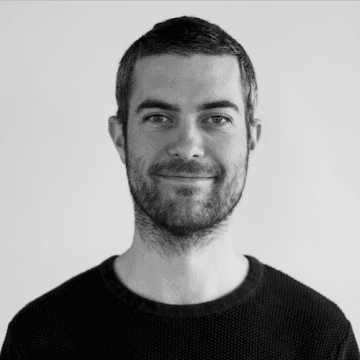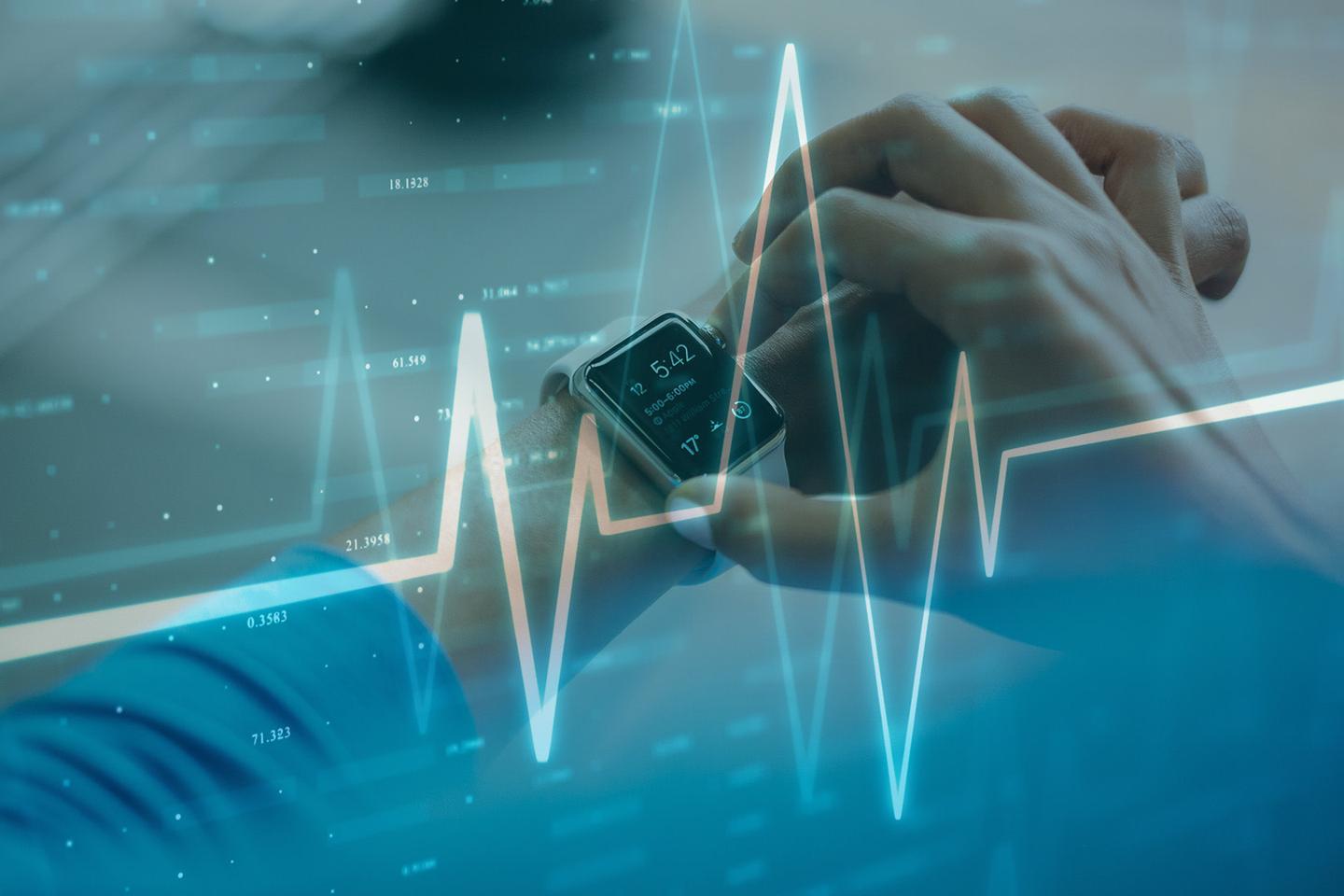How AI might improve sleep health for millions
Futurice and breathesimple™ have been working closely together over the last year, looking at how digital tools can support better sleep.

Background
Poor sleep is now acknowledged to be a source of poor health for large populations. Unfortunately, help is still delivered by out-of-date systems and technology. But this is about to change, with new enabling technologies poised to trigger seismic disruptions in the sleep management market sector. Will it follow such examples as eye-glasses vs. contact lenses, incandescent vs. LED lights, film vs. digital cameras, rental vs. video streaming, bricks & mortar vs. on-line shopping etc.? Surely you have your own go-to example of well-established incumbents failing to adopt new enabling technologies before it was too late?
Here is why we think the sleep sector is ripe for disruption.
We began by analysing major shortcomings in the existing generation of sleep diagnostic and therapeutic methods. We found many opportunities for innovation.
A deep-dive into the most recent sleep research from top scientists around the world exposed how the latest technologies can disrupt the status quo and open up major new markets. Specifically, many current shortcomings can be largely overcome by just two technology enablers:
- Mining historical patient databases using AI techniques
- Delivering the results via the newest device architectures.
Finally, being practitioners by nature, not just satisfied with a report, we used our in-house implementation skills to take these ideas into practice; we built and tested an MVP low-cost system to meet the demands of the large unserved market we had identified. The technology we used for this work with breathesimple™ is described in detail in an earlier blog.
In this post we share our thoughts derived from our broad analysis of the sleep management market and invite interested parties to join us to capture this large opportunity.
About sleep apnea
Sleep apnea is a common condition in which breathing is interrupted many times during sleep. This can prevent key organs, including the brain, from getting enough oxygen to function correctly. This leads to daytime drowsiness resulting in depression, moodiness and poor work performance; and worse – workplace and vehicle accidents. And in the longer term, it is linked directly to severe chronic diseases such as strokes, heart attacks, diabetes, and dementia, all reducing life quality and expectancy.
Sleep apnea also impacts personal relationships. The health of sleep partners is harmed by being woken up many times during the night by irregular gasping and snoring emanating from their loved ones. This amounts to a loss of at least one hour of restful sleep often leading to banishment to a separate bedroom, and even divorce. Partner sleep loss can be compared to harmful secondary cigarette smoke, a lurking, unsuspected yet fatal danger.
1.2 billion individuals suffer from the sleep disturbed breathing worldwide, and around 85% have not even been diagnosed, yet alone treated. This is an enormous burden on healthcare costs, support systems and life quality. The shortcomings of current sleep diagnosis and therapeutic methods have failed to make any impact on the 85 percenters that may have life threatening symptoms. Here are some of the reasons.
First shortcoming – no reliable low-cost screening
Apnea sufferers may not even be aware that their sleep is being disturbed by unstable breathing; the symptoms are not always obvious. They may go for years unknowingly aware of the dangers until it is too late to repair the damage that has accrued.
And denial is a natural and powerful response to a condition that is often associated with obesity, and associated societal shame. Better not to admit to the problem. As US author Brennan Manning wisely observed, “That which is denied cannot be healed.”
There is also a reluctance to be subjected to the rigors of one or more overnight sleep tests in a remote lab. Still considered to be the ‘gold standard’ for diagnosis, it is an unpleasant experience, expensive, and the results can be compromised by the invasive nature of the tests. Although these are gradually being replaced by home sleep testing which mitigates some of the issues, it is not without problems.
These shortcomings can be overcome by a very low cost, non-invasive method to screen for early signs of sleep disturbed breathing. After all, most homes have a fever thermometer ( ̴ $5), a bathroom scale ( ̴ $20) and many have a blood pressure monitor ( ̴ $25). Why not a $5 sleep monitor that can be used regularly to capture the 85% of apnea sufferers who either do not know they have a problem, or are in denial? Removing the cost and effort of purchasing a new device removes one of the major barriers for getting the 85 percenters to recognize they might have a burgeoning health problem.
Second shortcoming – it’s not all about the airway!
Until recently, the cause of sleep apnea has been attributed entirely to the collapse of the upper airways during sleep. Indeed, poor upper airway structure and muscle tone play a major role especially in overweight individuals. The gold standard for treating upper airway collapse is the CPAP device, invented 45 years ago. These devices have a number of disadvantages including variable and often poor user compliance, inconvenience associated with travel and other lifestyles, and in some cases, poor efficacy. And they hardly enhance personal allure!
Such negative concerns associated with CPAP devices have led to other ways of treating upper airway collapse. These include oral inserts that push the jaw forward, appliances that exercise the tongue muscles, and implants that stimulate the throat muscles when airflow is restricted.
The overly strong focus on the mechanics of the upper airway has diverted attention from other possible causes of sleep apnea. In particular, recent research in the unique human neurology of breathing control, and the role of neuroplasticity has shown that around 40% of the triggers instigating sleep apnea cycles result from unstable breathing control; any slight disturbance can trigger the brain to overcompensate and commence a sequence of over- and under-breathing. The technical term for this is ‘high loop gain’. Just as a loud-speaker howls when a microphone picks up too much sound, the brain can go into overdrive when breathing is disturbed. This knowledge opens up new avenues for diagnosis and treatment.
Third shortcoming – one size does NOT fit all!
The realization that there may be several different triggers setting off sleep apnea cycles has led to the concept of different phenotypes among patients. One size does not fit all. Whereas, in the past, when a patient exhibited apnea symptoms in a lab test, the most likely treatment would be a CPAP mask. “If all you have is a hammer, everything looks like a nail”.
Now with the knowledge that there are other causes of apnea, as well as a broader range of treatment options, therapies can be tailored to individuals. CPAPs will still be an important component, but not the only tool in the kit. To take advantage of these options however, we need a simple screening system to determine the most appropriate treatment program. We need to add a phenotype classifier to our low-cost sleep screener - and at no additional cost.
Fourth shortcoming – wearables are not the answer - yet
Consumer sleep trackers are in vogue. Roughly a third of the US population regularly uses some form of tracker most every night! Rings, watches, sleep pads, even radar devices are monitoring you every minute, while you sleep. This obsessiveness has even created a new disease category - orthosomnia - the fixation on data from trackers to the point that it causes anxiety and more disrupted sleep. Rather than improving sleep, trackers may have the opposite effect at least for some individuals. They are just not that good yet.
In comparative tests there are major discrepancies between different trackers. Focusing on sleep stage detection is a poor indicator of sleep health and certainly not sufficient for apnea detection, phenotype classification and personal treatment recommendations. There are no standards and no clear relationship to underlying health issues. Sleep stage patterns are like finger-prints; we each have our own unique template.
We do predict that trackers will improve particularly when minute by minute blood oxygen levels are reliably sensed. But we are not there yet. Nevertheless trackers will play a significant role in the management of sleep when enough data has been collected for AI mining to enhance performance.
Putting it all together – serving the 85%’ers
Based on our analysis, our team designed and implemented a sleep management system that engages, diagnoses, phenotypes and enhances apnea treatment.
To overcome the first shortcoming it is important that there is no need to purchase a new device. This removes a major disincentive for the 80 percenters to get engaged. Therefore we simply use a smartphone to screen for potential apnea symptoms as well as to determine phenotype classes. Using the device microphone, breathing patterns are detected both during sleep and when awake. Algorithms created using machine learning on thousands of historical sleep tests are able to determine whether an individual has apnea symptoms, and whether the event may have a neurological component.
If the screen indicates no consequential apnea symptoms we prompt the individual to use the phone every few months for a few nights to determine whether there are any changes that need to be addressed.
If there are indications of apnea symptoms that may need attention, we recommend specific actions. These include using a wearable with the ability to track sleep apnea levels using rapid sampling of blood oxygen concentration, the key factor that may result in long term health problems. For our system we chose the reliable and comfortable Circul+ ring from Bodimetrics.
If the initial smartphone screening indicates that there is a significant neurological component to the apnea events, we recommend and deliver a regimen of personalized breath training based on neuroplastic modification of the breathing control centers in the brain. We use a ring wearable to guide the training and track the improvements in sleep apnea using the wearable. The two modes are:
Sleep Mode: In this mode, the ring tracks blood oxygen levels throughout the night. It calculates the Oxygen Desaturation Index (ODI), which indicates how frequently blood oxygen level drops to a dangerous level. This measurement is crucial for identifying sleep apnea and other in combination with a smartphone, related breathing issues like snoring.
Breath Training Mode: This mode focuses on improving your breathing quality through guided exercises. The ring's precise heart rate monitoring, combined with advanced algorithms, assesses your breathing. The mode can be used in combination with other treatments that focus on airway management to improve overall treatment outcomes.
We’ve had good results from our initial tests, and we continue to work to refine and improve what we believe can be a transformative diagnostic and treatment for a common and debilitating health issue. Advances in AI and wearables, in combination, promise a near-term and major boost to what we can do to bring better sleep to millions.
- Tony WarrenCEO, breathesimple™
 Matthew EdwardsManaging Director, UK
Matthew EdwardsManaging Director, UK





